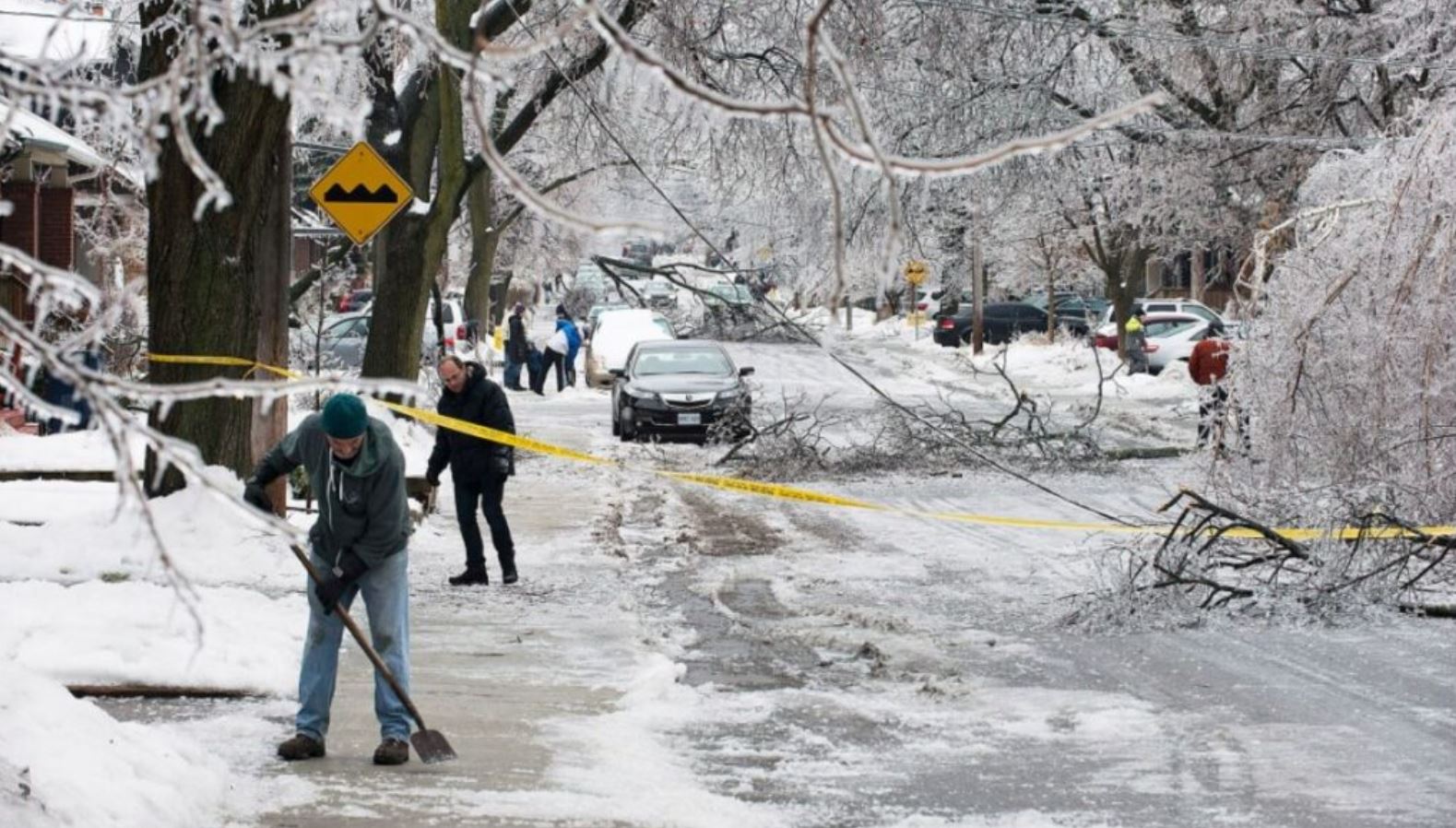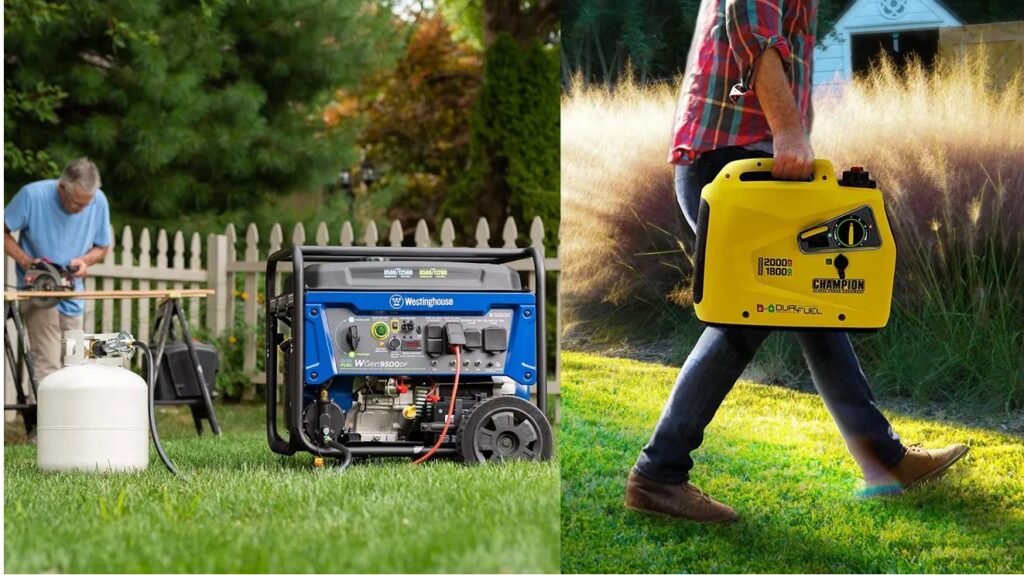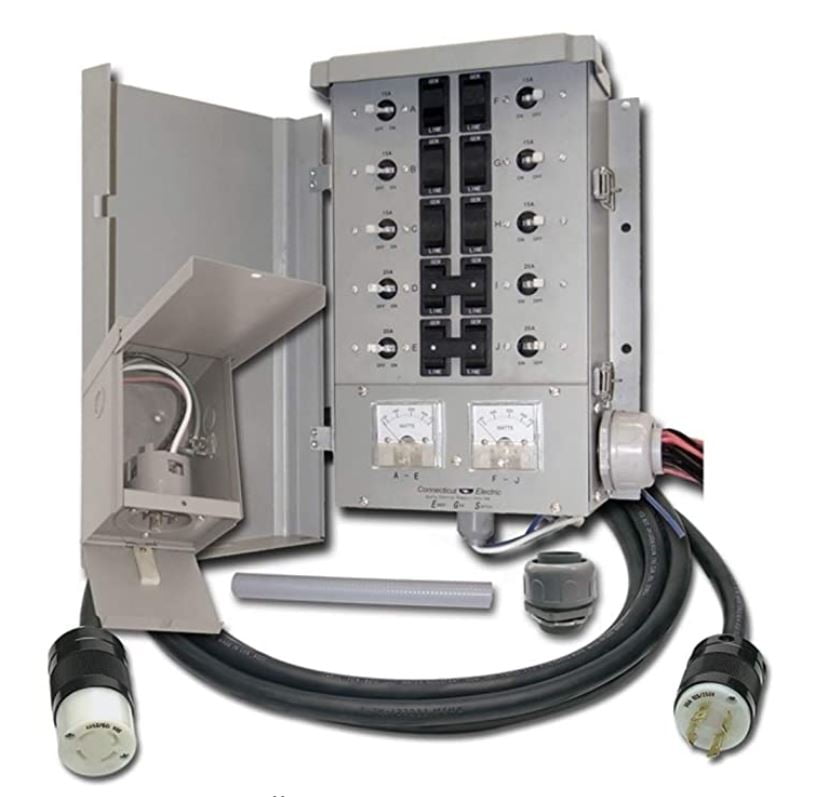In 2013 the City of Toronto was hit with a massive ice storm that left the city looking like a magical winter wonderland. The thick layer of ice caused trees, and powerlines to fall and left more than 400,000 Ontario residents without any power. Many residents had to survive the frigid temperatures in their homes, and others had to move to hotels until the power was back. In 2016, Ontario was once again hit by an ice storm that left more than 75,000 Ontario residents without power. It goes without saying that more and more often we are seeing the occurrence of frequent snow and ice storms that knock out powerlines and leave residents without power. Once the power is gone residents lose the ability to heat their homes, keep their fridges running, and have running water (in the case of homes with well pumps). Anyone who has experienced a Canadian winter knows that the frigid temperatures are intolerable without proper heating systems. That is where an emergency backup portable generator comes into play.
What are portable power generators and how to choose the correct one?
During a power outage, an emergency power generator will provide you and your family with the power you need to run all the essential appliances in your home. All generators have an engine that runs on fuel which in turn creates electricity that can be used independently of having access to any electrical outlets. Thus, before you buy a power generator you may consider the following:
- Size
The size of the portable power generator you choose is directly related to how much power you will need. The more power you need to power up electronics and appliances the more watts the generator will need to have. For an emergency power outage, you should consider buying a power generator that has an output of around 5,000 watts to 8,000 watts. - Type
There are two main type of portable power generators: open frame and inverter designs. Open frame generators typically provide the highest wattage, they run on fossil fuel and are typically cheaper but are very noisy. An inverter generator is usually much more quieter but tends to be much more expensive because it draws power from the fuel tank but can also run on battery, alternator and inverter. - Quality
The price you pay for a portable generator is directly related to the quality of the item. For this very reason you have to balance, how many years of warranty the company offers, the kind of costumer service they provide, where the item is made and how easy it is to get parts to fix it in case it breaks down. Be aware that cheap generators can be of low quality and leave you stranded in a power outage. For this very reason before you buy a portable generator make sure to shop around!
Once you buy a portable generator to protect you from any power outages, what else should you do?
An important note about portable power generators is that they have to be kept outside and therefore the only way to run any appliances would be to connect them directly to the generator or to use extension cords to reach the generator. This is why at MADE ELECTRIC we highly recommend that homeowners consider installing a manual transfer switch for emergency power. This is the best way to have continuous power running through your home in an emergency power outage.
How does a manual transfer switch work?
During a power outage, a manual transfer switch allows you to connect an emergency power generator to the house’s main circuits and have them run on generator power. When the power goes out you will need to manually switch the power from your line power to your generator. Upon installation of a manual transfer switch, a MADE ELECTRIC license electrical contractor would make sure that the homeowner chooses the top six circuits to run during a power outage. Typically, MADE ELECTRIC recommends homeowners include circuits that allow you to run your: refrigerator and freezer, stove, essential lights, security system, well pump, and heating system. In special cases, homeowners should also consider choosing circuits that provide power to any medical equipment such as oxygen tanks.
Installing a manual transfer switch is not a DIY project and it requires a licensed electrical contractor to do the job, DO NOT attempt to do this yourself. If you want to be prepared for any power outages this winter call MADE ELECTRIC and have a manual transfer switch installed in your home.
MADE ELECTRIC is a trusted electrical contractor that operates in Toronto and the GTA, our team is fully licensed and professional. For any electrical needs, you may have do not hesitate to contact us at 1 (833) 623-3247, or e-mails at info@madeelectric.ca



